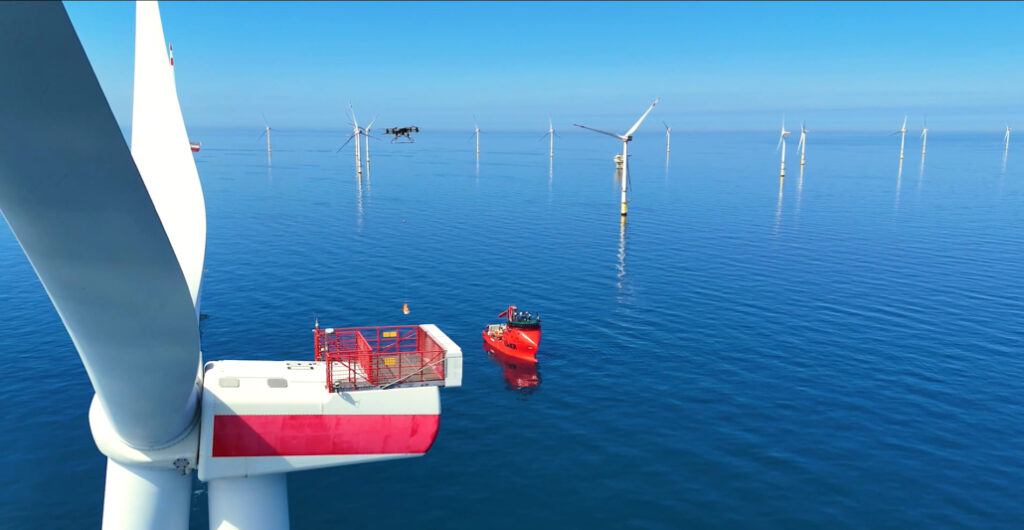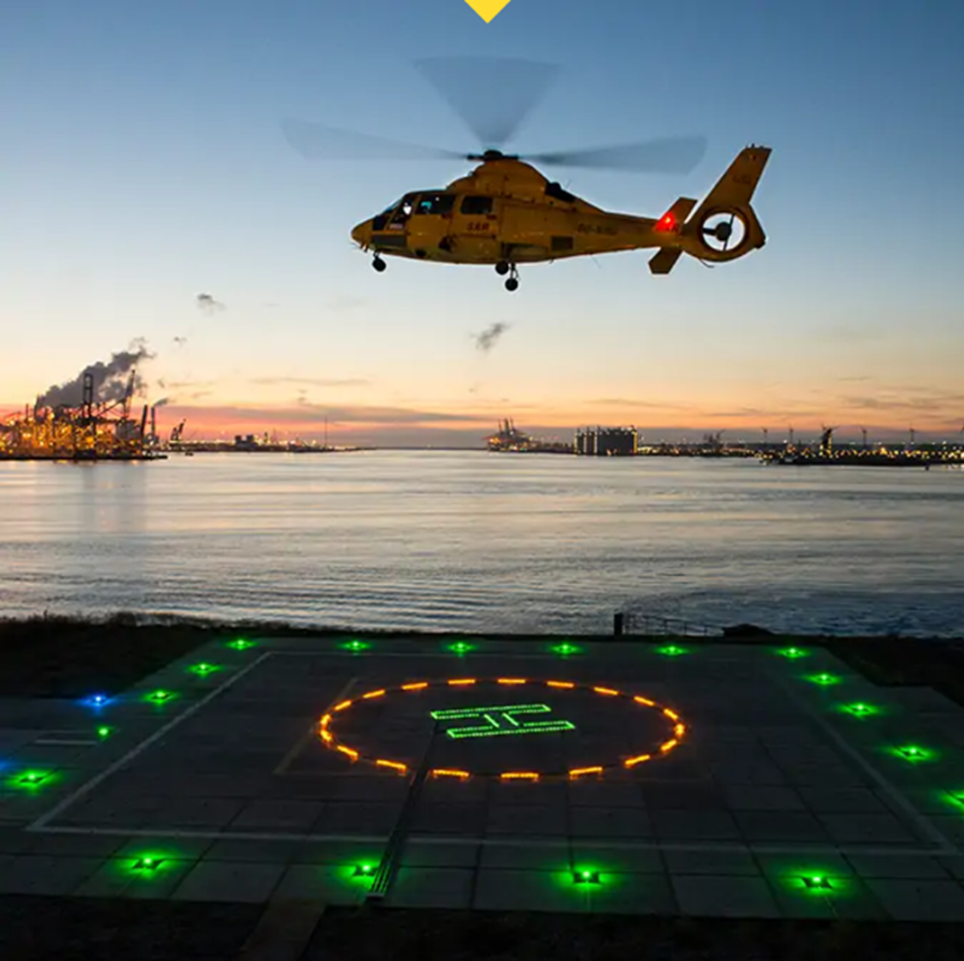Under the most challenging conditions—far out at sea, where helicopters can only fly in good weather and ships are continuously in motion—materials and tools must be transported safely. South Holland-based companies and knowledge institutions have launched an innovation project to enable drones to land independently on moving platforms.
The project “Optical communication and guidance for maintenance & cargo drones at offshore wind farms” was recently approved by the Netherlands Enterprise Agency (RvO). It receives approximately €490,000 in funding, with investments from the partners bringing the total to around €780,000 over the two-year duration. Ultimately, the innovation aims to become a new industry standard at sea.
Currently, helicopters are the standard means of transporting materials, parts, and personnel to offshore wind farms and vessels. Helicopter pilots make use of lighting and signaling on helidecks and red beacons on wind turbines to safely operate in maritime environment. However, the use of helicopters is expensive, weather-dependent, and highly regulated.

Cameras and Smart Algorithms
To reduce this dependency, Orga (Schiedam), AerogridUAV (Delft), TU Delft, and the German Aerospace Center (DLR) are investigating whether drones can navigate based on light. The maritime drones utilize existing aviation lighting systems via colored beacons with flashing patterns, currently used by manned helicopters for safe landings.
By combining cameras and smart algorithms with these light signals, drones can autonomously determine their position and land safely on ships and wind turbines, without GPS, even in fog or poor visibility conditions at sea.
“This shift from light as a visual aid to light as a carrier of data represents a fundamental evolution in how unmanned aviation interacts with infrastructure.”
Scalable, Cost‑Effective, and Easy to Implement
The approach is unique because it requires no additional sensors or complex infrastructure. This makes the technology scalable, cost‑efficient, and easy to deploy within existing offshore safety standards.
Although manned helicopters will remain essential for transporting technicians, unmanned drones could eventually take over a large part of material transport—delivering tools, spare parts, or sensors—flights that are typically “dull, dirty, and dangerous.”
“We help helicopter pilots land safely on offshore platforms using visual signals. With this project, we’re taking the logical next step: shifting from human‑oriented signaling to machine-to-machine communication.” – Christian van Beest, Business Development Manager, Orga BV
“Landing a drone on a moving ship is incredibly challenging. The deck moves up and down and is battered by strong sea winds. With the Light Landing project, we tackle this challenge head‑on to reduce the maintenance costs of offshore wind turbines.” – Ewoud Smeur, Assistant Professor, Micro Air Vehicle Laboratory, TU Delft

Consortium Makes It Possible
The consortium includes: Orga (Schiedam): International leader in optical beaconing and navigation systems, AerogridUAV (Delft): Specializes in autonomous drones and test flights, TU Delft and DLR: Developing underlying drone technology, algorithms, and optical systems.
This collaboration emerged from the South Holland innovation ecosystem, facilitated through networks like Aerospace Delta and partners such as the Municipality of Schiedam and the Business Innovation Centre at Rotterdam University of Applied Sciences. InnovationQuarter supported the consortium in developing the project.
This innovation aligns with regional ambitions to strengthen cross-sector cooperation and help entrepreneurs enter new markets.
0 Comments